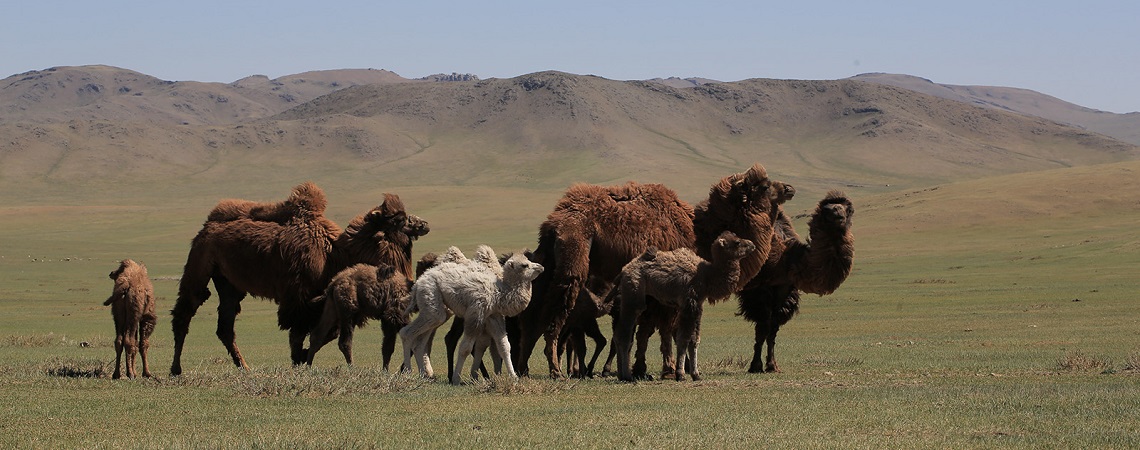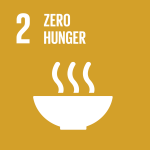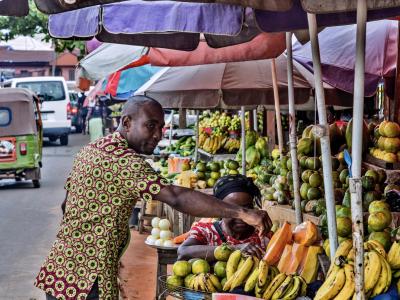
Photo:
Mongolia is a landlocked country with vast mountainous plateaus sloping from west to east in the country. Mongolia has a very low population density and many of its rural communities are traditionally nomadic pastoralists. The livestock and animal husbandry sector contributes to 80 percent of its agricultural production through a range of food and other products, such as sheep wool, goat cashmere, large animal hair, camel wool and milk. One-third of the country’s labor force is employed in agricultural work, and it accounts for 8.4 percent of the country's exports and 10.6 percent of its GDP. The agriculture sector, however, is highly vulnerable to the impacts of climate change. Increased upper heat thresholds are projected to change annual precipitation patterns and increase the number of “dry days”, which will lead to significant volatility in agricultural productivity and livelihoods. In addition, the higher frequency and intensity of major climate-related hazards including storms (dust storms, windstorms, thunderstorms, and snowstorms), droughts, and extended harsh winters are expected to exacerbate conditions.
- National
- Regional
- Global
- Country Office
- National Governments
- United Nations Development Programme (UNDP)
- Food and Agriculture Organization of the United Nations (FAO)
- BMUV/IKI
- Image

- Image

The Government of Mongolia has key national policy documents, such as a National Action Plan on Climate Change (2011-2021) and the Green Development Policy (2014-2030). Mongolia’s first Nationally Determined Contribution (NDC) was submitted in 2016 and was updated in 2020. Mongolia’s NDC mitigation target is articulated as a 22.7 percent reduction in total national GHG emissions by 2030 compared to the projected emissions under a business-as-usual scenario for 2010, focusing on the transport, industry, agriculture and waste sectors, among others. Additional key mitigation priorities include limiting and reducing the number of livestock while enhancing livestock quality and herd structures, improving the management of livestock manure, protecting pastureland soil and establishing forest strips around arable lands to preserve soil moisture and reduce wind and water erosion.
The NDC includes a distinct adaptation component with goals and targets for priority areas, such as animal husbandry and pastureland, arable farming, water resources, forest resources, and biodiversity. Under animal husbandry and pastureland management, adaptation priorities focus on maintaining balance in ecosystems and strengthening legal frameworks. The NDC also highlights the need for sustainable use of pasturelands by increasing forage cultivation and water supplies for livestock, as well as the enhancement of disaster management systems against drought. On arable farming, the NDC outlines plans to improve legal frameworks to overcome climate change adaptation challenges and aims to introduce advanced water and labor efficient technologies in the production of potatoes, vegetables, fruits and berries to enhance productivity. Additional adaptation measures include fencing and planting strips (forests, fodder plants and technical plants) around arable crop lands and introducing soil-conserving zero tillage methods with straw mulch to retain soil moisture.
The NDC mentions Mongolia’s National Adaptation Plan (NAP) process, which was initiated in 2018 and submitted to the UNFCCC on 8 April 2025 as well as culminated in the approved document by the National Climate Committee of Mongolia in 2024, as the primary means through which specific adaptation actions will be identified. These include improving pasture management, regulation of livestock numbers and herds’ composition by matching with pastures carrying capacities, improving animal breeds, and regional development of intensified animal farming.
The Government of Mongolia approved the NDC Action Plan (2021-2030) in 2021 but continues to face certain challenges in implementing the NDC Action Plan, such as access to finance, inadequate institutional arrangements, and lack of human and technical capacities. To overcome these challenges, specifically on access to finance, Mongolia has to rely on international funding from developed countries. Over the next few years, Mongolia will continue to receive support from the SCALA programme to strengthen institutional arrangements and build technical capacity.
SCALA supports Mongolia in strengthening adaptation and mitigation measures, with a particular focus on arable farming, livestock, sustainable pastureland management and fruit production, all key priorities outlined in the country’s updated NDC.
In Mongolia, an evaluation of carbon market schemes for pasture carbon sequestration was completed, resulting in a published policy brief that outlines the high potential of soil organic carbon in rangelands, and recommends establishing a legal framework and a dedicated Carbon Market Office to support a domestic carbon market.
A second assessment, conducted with the Mongolian University of Agricultural Science, examined the feasibility of establishing forest strips around arable land as a key adaptation strategy to reduce soil erosion. The study highlights the use of FAO’s SEPAL tool for monitoring and recommends including forest strip implementation in Mongolia’s next NDC update.
A training workshop on gender-responsive climate planning and budgeting was held in March 2025, in collaboration with the UNDP’s Climate Finance Network, targeting cross-sectoral government stakeholders.
Efforts to strengthen Mongolia’s national MRV system progressed, resulting in technical support for enhancing data management systems and a draft report with improved data collection formats and a sharing template for the AFOLU sector as well as the adaptation of the GLEAM tool for livestock emissions modelling and as a prospective method for monitoring and reporting.
SCALA is actively supporting Mongolia’s NDC enhancement process by providing mitigation recommendations, including aligning livestock numbers with pasture carrying capacity and promoting high-yielding animals to reduce grazing pressure.
An assessment was completed to inform a project concept note on sustainable pastureland management, highlighting the need to strengthen zoo-meteorological infrastructure in vulnerable regions and summarizing Mongolia’s GCF portfolio.
Building on SCALA support, FAO supported the 2023 SCALA Hackathon-winning ‘Team Splicing’ to secure US$100,000 through the Elevate Innovation Fund to develop a prototype app that enhances the existing ‘Nuudelchin’ platform with features like herd planning, weather updates, emissions estimates, and market data for livestock herders.
Moving ahead, SCALA in Mongolia aims to:
- Ongoing assessment on the potential of surface water harvesting structures to strengthen community climate resilience, with fieldwork completed in three western provinces and guidelines under finalization for practical implementation.
- A national multistakeholder dialogue on Mongolia’s NDC 3.0 targets for agriculture was held with 55 participants; a report has been published, with similar events planned throughout 2025 to support NDC 3.0 development.
- SCALA is contributing technical expertise to formulate agriculture and livestock-specific NDC targets as part of the ongoing NDC 3.0 process.













